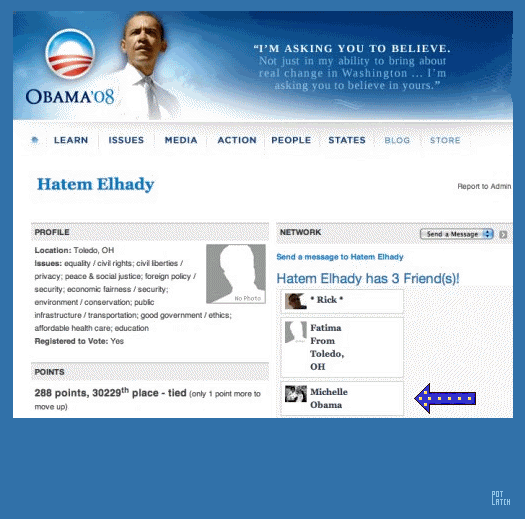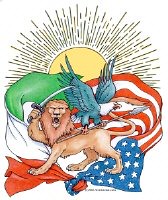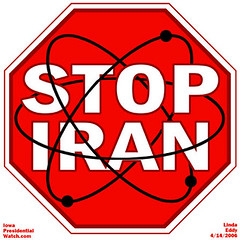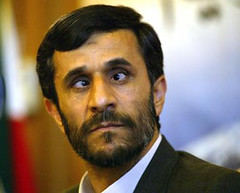ALSO : pictures of Reza Pahlavi appearing in Iran - a good start .
http://alanpetersvideos.blogspot.com/2008/04/posters-of-reza-pahlavi-appearing-in.html
Other than everyone and everything there except the Jamkaran well down which the teenage 12th Imam disappeared some 1,400 years ago and needs to be enticed back with bloodshed, suffering, death and misery to redeem the world! READ ON FOR A PRESSING REASON TO REMOVE THE MULLAHS BEFORE THEY OFFICIALLY REVIVE DEAD TREATIES WITH THE SOVIETS. and finally hand the country to Russia - lock, stock and oil barrel. Why is the leadership in Tehran anxious to give Russia the right to land troops in Iran?By Amir Taheri
The question is not fanciful. The Islamic Republic is conducting a devious campaign to prepare public opinion for that eventuality. The message is relayed through deliberately vague terms that diplomats understand immediately while the general public does not. The device is to revive two treaties that most students of Iranian history thought were dead and buried long ago. The first is the 1921 Treaty that the government of Sayyed Ziauddin Tabatabai, soon after coming to power in a putsch, signed with Vladimir Lenin’s Bolshevik regime. At the time the Bolsheviks had some troops in the Iranian province of Gilan on the Caspian Sea, supporting a rebellion led by a leftist mullah known as Mirza Kuchak Khan of the Jungle. At the same time, the British were using Iranian territory to ferry troops and materiel to anti-Bolshevik nationalist forces in Transcaucasia. Under the treaty, Lenin agreed to cancel the debts Iran had accumulated towards the Tsarist Empire. He also undertook to withdraw his troops from Gilan. The treaty revised relations in the Caspian Sea, granting Iran greater rights of fishing and navigation. That amounted to a generous gesture towards Tabatabai’s new government that, still fragile, needed all the good news it could get in relations with the major powers. Nevertheless, as always when a weak nation makes a pact with a much larger neighbour, the treaty had a sting in its tail. It gave the Russians the right to land troops in Iran when and if troops of any other foreign power arrived in Iran. At the time it was Britain that Lenin had in mind. For his part, Tabatabai wanted to use the threat of Russian military intervention as a means of forcing the British to end their military presence in Iran. However, in one of those twists of history, the treaty was never used for its original purpose. The British soon abandoned their anti-Bolshevik allies whom they found too weak to defeat Lenin’s new empire. Lenin, for his part, believing he could add Iran to his empire through ideological agitation rather than conquest, abandoned the Mullah of the Jungle and withdrew the Soviet troops. In 1941, however, Soviet troops, this time under Stalin, invaded Iran. The legal pretext was the 1921 treaty. Soviet propaganda claimed that the presence of a few German military experts and, possibly, spies, in Tehran amounted to a foreign hostile force on Iranian soil. Reza Shah, the Iranian monarch, had refused to kick the Germans out, possibly in the hope that Hitler would defeat Russia and Britain, Iran’s two principal enemies for 150 years. Within days of the Soviet invasion, backed by a British invasion of Iranian territory from Iraq, Reza Shah was forced into exile. The new Iranian government, under Prime Minister Muhammad-Ali Forughi, had to accept the legality of the invasion under the 1921 Treaty. Nevertheless, both sides felt that a new treaty was needed to determine the status of Soviet troops in Iran. Negotiations were railroaded at top speed, with the British supporting the Soviets in the name of their alliance against Nazi Germany. The Iranian side, weak and disorganised in a country under foreign occupation, protested. But, with Soviet and British guns pointed at its head, it ended up signing the 1941 Treaty. The new treaty, recalling that of 1921, reaffirmed the right of the USSR to send troops to Iran if and when Moscow felt it was threatened by a third power’s presence in Iran. The two treaties entered Iran’s diplomatic memory as black moments in history. Abbas-Ali Khalatbari, Iran’s Foreign Minister between 1971 and 1978, described them as “two bleeding wounds in our heart.” In 1946, as Stalin’s troops were forced to leave, the Shah declared the two treaties “dead and buried”. But, facing a strong Soviet-backed Communist Party and its allies, he was too weak to ask the parliament to formally cancel the treaties. In 1963, the Soviets launched a campaign to revive the treaties. They claimed that the arrival in Iran of American military instructors, invited to help build the new Iranian air force, amounted to “a foreign hostile presence” under the terms of the treaties. The Iranians ignored the Soviet campaign and, on a number of occasions, announced a unilateral cancellation of the treaties. The most significant official move to cancel the treaties came after the fall of the Shah. In 1980, Ibrahim Yazdi, a US citizen of Iranian origin serving as Khomeini’s Foreign Minister, solemnly announced that the newly created Islamic Republic did not recognise the treaties. A diplomatic seesaw battle ensued in which the Iranian side stood by Yazdi’s declaration. The matter rested in limbo, with most experts agreeing that the treaties were dead, until the fall of the Soviet Empire in 1991. After that neither side mentioned the treaties, presumably because both agreed that accords between two fallen regimes could not apply in radically changed circumstances. So, one can imagine the surprise caused by President Mahmoud Ahmadinejad’s decision to suddenly start speaking of the two treaties as if they were still valid. He and his aides, including Foreign Minister Manuchehr Motakki, have mentioned the treaties with regard to the status of the Caspian Sea and the application by the Islamic Republic to join Russia and China in the Shanghai Group, an informal framework for security cooperation. Motakki has gone further by suggesting that Iran abandon the Persian name for the Caspian Sea, that is to say the Sea of Mazandaran, and adopt the Russian name mentioned in the treaties. To sweeten Russia further, Motakki has also hinted at abandoning Iran’s demand for a 20 per cent share in the Caspian’s resources, settling, instead, for just over 11 per cent. Why is an administration that pretends it has a mission from the “Hidden Imam” to liberate the whole world keen to give Russia a licence to land troops in Iran? Obviously, only Ahmadinejad and his associates know the full answer. However, one could speculate that the Khomeinist president has decided that a war with the United States is inevitable. In such a war, the Americans may well seize Iran’s oilfields, an easy target for a surprise attack and a difficult asset for defenders to protect. Once that happens Russia could land troops in northern Iran and then go to the United Nations to ask for a generalised ceasefire and the fixing of a timetable for the withdrawal of “all foreign troops from all Iranian territory.” The US would come under global pressure to cooperate with Russia in ending the conflict and paving the way for the departure of foreign troops and the restoration of Iranian sovereignty. If that is how Ahmadinejad thinks, he has just returned to 1921 and Sayyed Ziauddin Tabatabai in an Iran as weak and as vulnerable. And that, for a man whose ambition is to lead mankind on a new path away from that fixed by “American Arrogance,” is not something to be proud of.



















